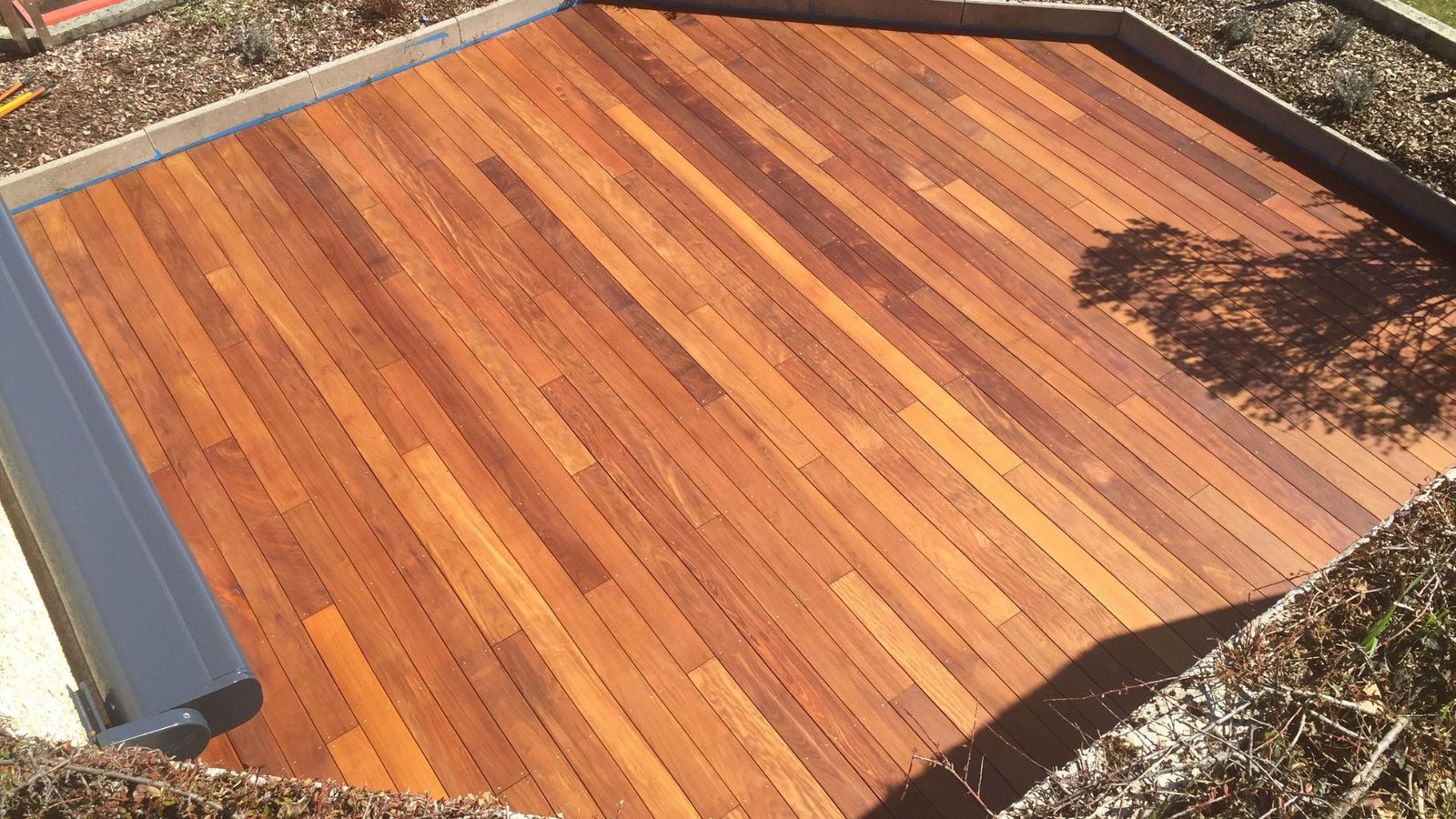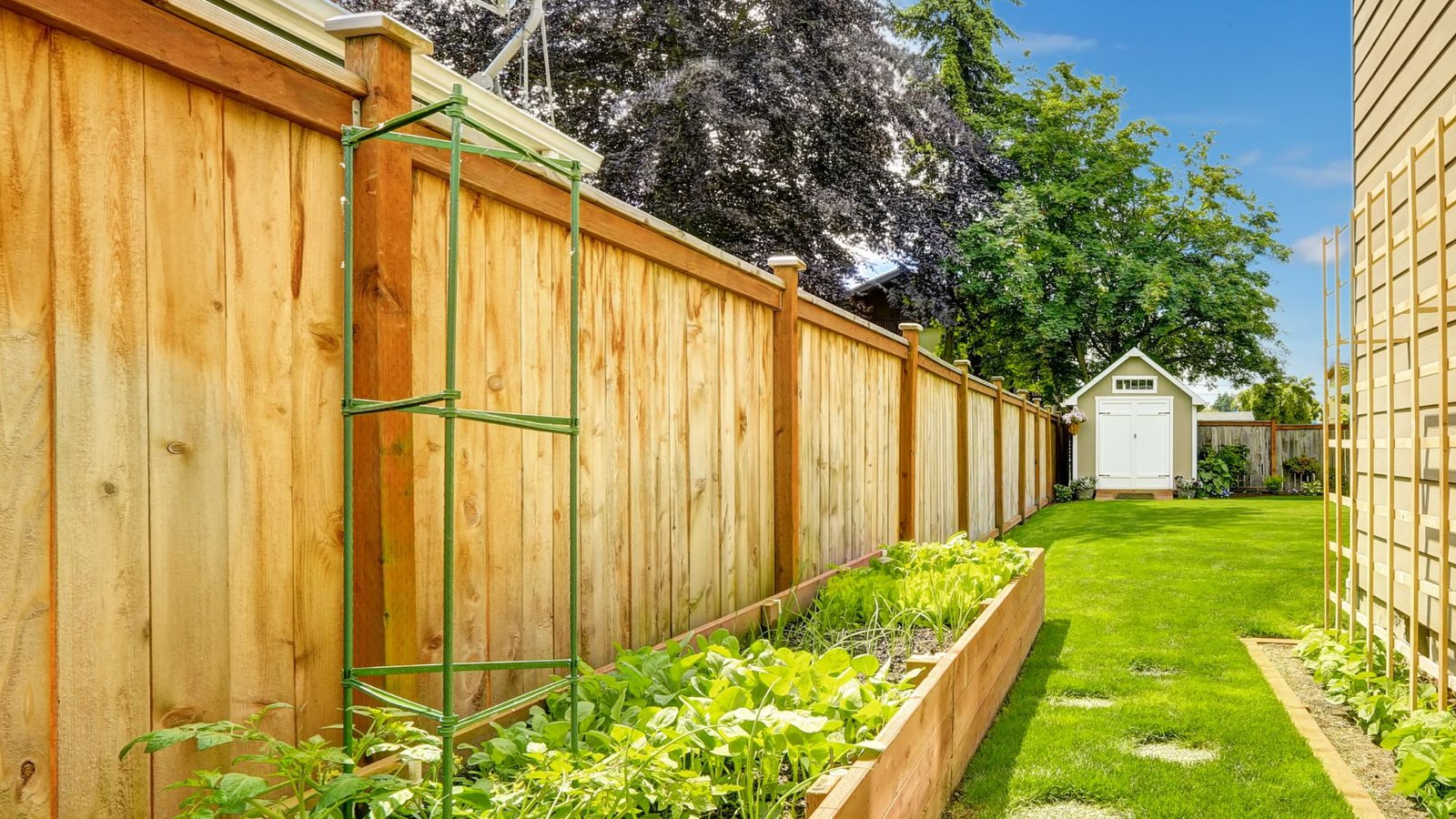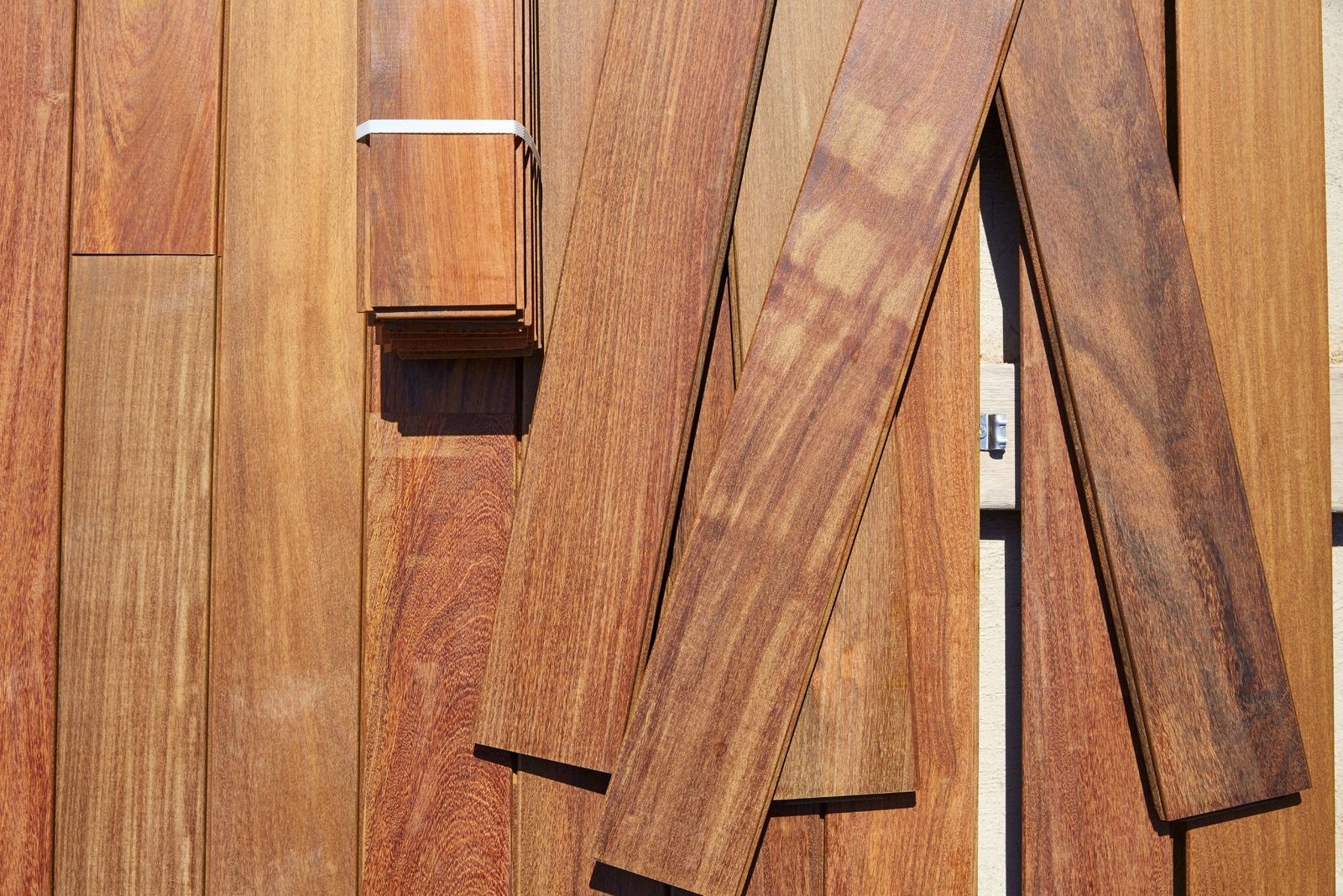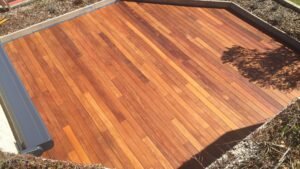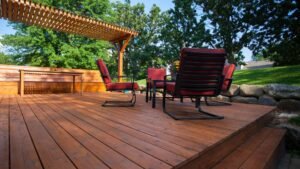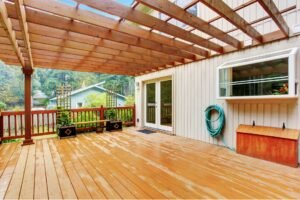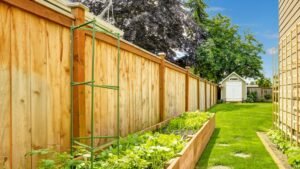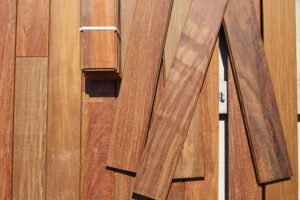Welcome to our comprehensive guide on how much a deck costs in NZ, where we explore everything you need to know about decking expenses in New Zealand. Whether you’re dreaming of a cozy outdoor retreat or a spacious entertainment area, understanding the costs involved is crucial. In this article, we’ll delve into the factors that influence deck prices, from material choices and design complexity to labor and permit fees. We’ll also provide budgeting tips, detailed cost breakdowns, and real-life case studies to help you make informed decisions for your decking project. By the end, you’ll have a clear picture of what to expect and how to plan your perfect deck without breaking the bank.
The cost of building a deck in New Zealand typically ranges from $300 to $1,000 per square meter, depending on factors such as the type of material used (timber, composite, or other alternatives), design complexity, site preparation, and labor costs. Timber decks, like pine or kwila, tend to be more affordable, while composite materials offer durability at a higher price. For a detailed cost breakdown and budgeting tips, read our comprehensive guide on decking costs in NZ.
Table of Contents
Importance Of Decking In NZ Homes
Importance of Decking in NZ Homes
Lifestyle Benefits
Decking in New Zealand homes has become more than just a trend; it’s an essential feature that significantly enhances outdoor living. With New Zealand’s stunning natural landscapes and pleasant climate, a deck serves as an ideal space for family gatherings, barbecues, and relaxation. Imagine enjoying a sunny afternoon with friends, grilling some delicious food, or simply unwinding with a book while surrounded by nature. A well-designed deck provides a seamless transition between indoor and outdoor living, making your home feel more expansive and inviting.
Moreover, decks offer a versatile area for various activities. Whether you’re hosting a party, practicing yoga, or setting up a cozy outdoor dining area, the deck becomes an extension of your living space. It allows you to maximize the use of your property, creating a perfect spot for kids to play, pets to roam, or for you to bask in the sun. By enhancing your outdoor lifestyle, a deck truly transforms how you experience your home.
Property Value
Investing in a well-designed deck can significantly boost your property’s value. Potential buyers in New Zealand often seek homes that offer attractive outdoor spaces, and a deck can be a major selling point. It not only adds to the aesthetic appeal of your home but also increases its functional space. A beautifully crafted deck can set your property apart in a competitive real estate market, making it more appealing to buyers.
Furthermore, a deck is seen as an upgrade that enhances the overall usability of the home. It can be customized to fit the architectural style of your house, adding a touch of elegance and sophistication. Buyers appreciate the additional living area and the lifestyle benefits it brings, which can lead to higher offers and a quicker sale. In essence, a deck is a valuable investment that pays off by increasing your home’s market value and desirability.
In conclusion, adding a deck to your NZ home offers numerous lifestyle benefits and a substantial boost to property value. It’s a smart investment that enhances your daily living experience and adds significant appeal to your home in the eyes of potential buyers.
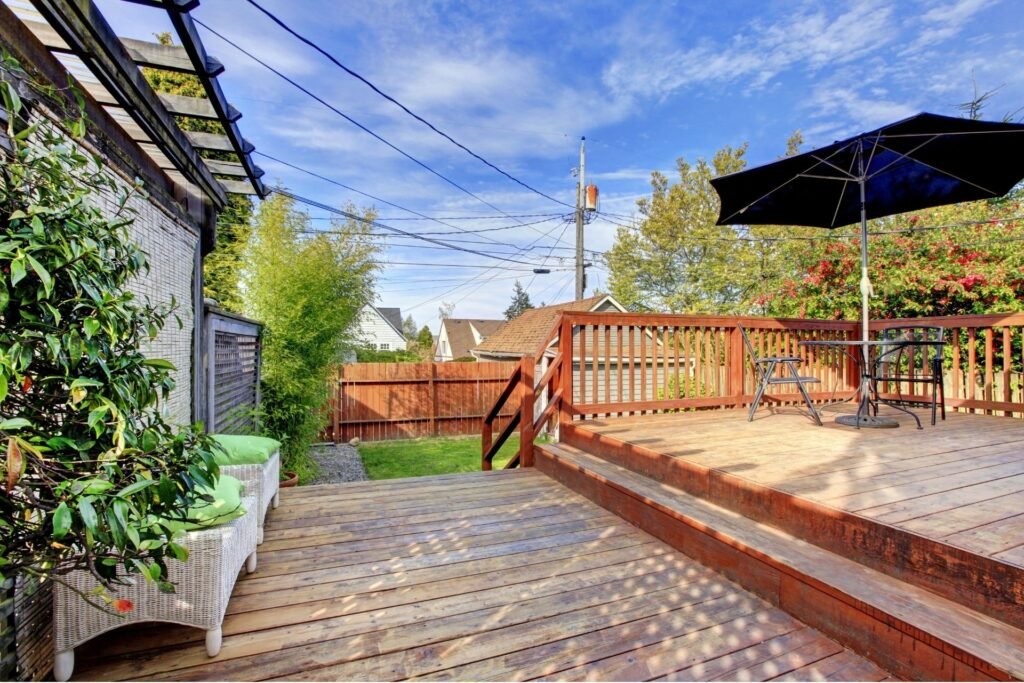
Factors Influencing Deck Cost In NZ
When planning to build a deck in New Zealand, several factors come into play that can significantly influence the overall cost. Understanding these factors can help homeowners make informed decisions and manage their budget effectively. Here’s a detailed breakdown of the key elements that impact deck cost in NZ:
Deck Size
The size of your deck is one of the most straightforward determinants of cost. Generally, the larger the deck, the higher the cost. This is because a larger deck requires more materials, additional labor, and possibly more complex structural considerations. For instance, a small, single-level deck will cost significantly less than a sprawling multi-level deck with intricate designs. When estimating costs, it’s helpful to calculate the price per square meter, which typically ranges from NZD $300 to $700 depending on the materials used and the complexity of the design.
Material Choices
Choosing the right material for your deck is crucial as it affects both the cost and the longevity of the structure. Here are the main options available:
Timber
Timber is a popular choice for decking due to its natural aesthetic and versatility. In New Zealand, common timber options include pine, macrocarpa, and hardwoods like kwila and vitex. Pine is the most cost-effective, with prices ranging from NZD $50 to $100 per square meter. Hardwood options are more expensive, ranging from NZD $150 to $300 per square meter but offer superior durability and a rich, natural appearance. However, timber decks require regular maintenance, such as staining and sealing, to prevent rot and insect damage.
Composite
Composite decking is made from a blend of wood fibers and recycled plastic, offering a low-maintenance alternative to traditional timber. Composite decks typically cost between NZD $120 and $300 per square meter. They are resistant to rot, splintering, and insects, and do not require staining or sealing, making them a convenient option for homeowners. However, the initial cost is higher compared to timber, and the look and feel may not appeal to purists who prefer the natural aesthetic of wood.
Other Materials
There are alternative materials such as PVC and aluminum decking. PVC decking is highly durable and low-maintenance, with costs ranging from NZD $150 to $300 per square meter. Aluminum decking is rare but offers exceptional durability and resistance to the elements, though it can be quite expensive, typically over NZD $300 per square meter.
Design Complexity
The complexity of your deck design can significantly impact the cost. Simple, single-level decks with basic railings are more affordable, while multi-level decks with built-in features like seating, planters, and intricate railings increase both material and labor costs. For example, adding built-in seating can add NZD $500 to $1,500 to the overall cost, while custom railings can range from NZD $50 to $200 per meter.
Site Preparation
Site preparation is another critical factor. Costs can vary depending on the condition of the site and any preparatory work needed. If the site requires leveling or soil removal, these tasks can add several hundred to several thousand dollars to the project. Additionally, if access to the site is difficult, it may require specialized equipment or additional labor, further increasing costs.
Labor Costs
Labor costs in New Zealand can vary widely based on the complexity of the project and the expertise of the professionals hired. On average, hiring a professional deck builder can cost between NZD $50 and $100 per hour. For a standard deck, labor costs can range from NZD $1,000 to $5,000. Opting for a DIY approach can save on labor costs, but it’s important to have the necessary skills and tools to ensure the deck is built safely and to code.
Permits and Regulations
In New Zealand, building a deck typically requires obtaining permits and ensuring compliance with local building codes. The cost for permits can vary depending on the size and complexity of the deck but generally ranges from NZD $200 to $500. Additionally, there may be costs associated with inspections and ensuring the deck meets all regulatory requirements. Non-compliance can lead to fines and additional costs to rectify any issues.
By considering these factors and planning accordingly, homeowners in New Zealand can better manage their deck-building budget and create a beautiful, functional outdoor space that meets their needs and complies with local regulations.

Detailed Cost Breakdown
When planning your decking project, understanding the costs involved is crucial. This section provides a comprehensive breakdown of expenses associated with both timber and composite decking in New Zealand, along with additional costs that may arise during installation.
Timber Decking Costs
Timber decking remains a popular choice in New Zealand due to its natural look and feel. The cost of timber decking can vary significantly depending on the type of wood you choose. Here’s a look at some of the most common types of timber used for decking and their associated costs:
1. Pine
Pine is one of the most affordable options for timber decking in NZ. It’s treated to withstand the elements and resist decay and insects.
- Average cost: Around $100 – $150 per square meter.
- Installation costs: Typically, installation can add an extra $60 – $100 per square meter.
2. Kwila
Kwila, also known as Merbau, is a durable and dense hardwood that is highly resistant to weathering. Its rich, reddish-brown color adds a touch of elegance to any outdoor space.
- Average cost: Approximately $140 – $180 per square meter.
- Installation costs: Installation costs range from $70 – $110 per square meter due to the wood’s density and the effort required to work with it.
3. Cedar
Cedar is prized for its beautiful, natural look and resistance to decay and insects. It’s lightweight and easy to work with, making it a popular choice for high-end decking projects.
- Average cost: Around $160 – $200 per square meter.
- Installation costs: Installation is usually around $70 – $120 per square meter.
Composite Decking Costs
Composite decking is an increasingly popular choice in New Zealand due to its low maintenance and long-lasting durability. Here’s a breakdown of costs associated with some of the leading composite decking brands:
1. Popular Composite Brands
- Trex: Known for its high quality and extensive warranty, Trex is a top choice for many homeowners.
- Futurewood: This brand offers environmentally friendly composite decking options.
- Millboard: Renowned for its realistic wood-like appearance and superior durability.
2. Average cost
Composite decking typically costs between $200 – $350 per square meter, depending on the brand and specific product line.
- Installation costs: Expect to pay an additional $70 – $130 per square meter for installation, as composite materials often require specialized tools and techniques.
Additional Costs
Beyond the cost of materials and installation, several additional expenses can influence the overall budget for your decking project:
1. Fasteners, Screws, and Brackets
These essential components ensure the stability and safety of your deck. Quality fasteners and screws can add between $10 – $30 per square meter to your total cost.
2. Staining, Sealing, or Painting (for Timber)
To maintain the beauty and longevity of your timber deck, periodic staining, sealing, or painting is necessary. This can cost around $5 – $15 per square meter annually, depending on the products used and the condition of the deck.
3. Lighting, Pergolas, and Other Add-ons
Enhancements such as deck lighting, pergolas, built-in seating, and planters can significantly enhance the functionality and aesthetics of your outdoor space. These add-ons can vary widely in cost. For example:
- Deck lighting: Installation costs can range from $50 – $150 per light fixture.
- Pergolas: A pergola can cost between $2,000 – $5,000, depending on the size and materials.
- Built-in seating: Custom seating solutions can add $500 – $2,000 to your project, depending on the design and materials.
In summary, the cost of a decking project in New Zealand can vary greatly depending on the materials and features you choose. By understanding the detailed breakdown of these costs, you can better plan your budget and ensure that your decking project meets your needs and expectations. Whether you opt for the natural beauty of timber or the low-maintenance appeal of composite, careful consideration of all associated costs will help you create a stunning outdoor space that adds value and enjoyment to your home.

Budgeting Tips For Your Deck Project
Building a deck is a fantastic way to enhance your outdoor living space, but it’s essential to budget carefully to avoid any financial surprises. Here are some practical tips to help you plan and manage your deck project budget effectively.
Planning and Research
The foundation of a successful deck project lies in meticulous planning and thorough research. Start by sketching out your deck’s design and layout, considering factors like size, shape, and the materials you want to use. Research the cost of various decking materials, from wood to composite, and understand the pros and cons of each. This phase is crucial because it allows you to estimate the overall cost accurately. Remember, a well-thought-out plan helps prevent unexpected expenses and ensures that your deck meets both your needs and your budget.
Getting Quotes
When it comes to building a deck, obtaining multiple quotes is essential. Don’t settle for the first contractor you come across. Instead, seek quotes from at least three different contractors. This gives you a broader perspective on pricing and helps you identify any potential outliers. When comparing quotes, pay attention to what each one includes. Some may cover labor and materials, while others might only account for labor. Also, ask for a breakdown of costs to understand where your money is going. This approach ensures you get the best value for your investment and prevents overpaying for services.
DIY vs. Hiring Professionals
One significant decision in your deck project is whether to tackle it yourself or hire professionals. A DIY approach can save money on labor costs, but it requires time, skills, and tools. If you’re handy and have experience with construction projects, DIY might be a viable option. However, consider the complexity of your design and your confidence in executing it. Hiring professionals, on the other hand, guarantees expertise and efficiency, though at a higher cost. Evaluate the pros and cons of each option, and factor in not just the immediate costs but also the potential long-term implications, such as the need for repairs due to mistakes in construction.
Saving on Materials
Deck materials can be a significant portion of your budget, so finding ways to save here can make a big difference. Consider purchasing materials in bulk to take advantage of discounts. Look for sales or promotions at local hardware stores or online. Another tip is to choose cost-effective materials that offer durability and aesthetic appeal without breaking the bank. For example, pressure-treated wood is often more affordable than high-end composite decking. Additionally, reclaimed or recycled materials can provide a unique look at a fraction of the cost of new materials. Be sure to balance cost savings with quality to ensure your deck stands the test of time.
Long-term Maintenance Costs
While the initial construction cost of your deck is significant, don’t overlook the long-term maintenance expenses. Different materials require varying levels of upkeep. For instance, wood decks need regular sealing and staining, while composite decks are generally lower maintenance. Factor these ongoing costs into your budget from the start. Planning for future maintenance ensures that you can keep your deck in top condition without financial strain. Setting aside a small portion of your budget for annual upkeep will help you avoid large, unexpected expenses down the line.
By following these budgeting tips, you can manage your deck project efficiently and enjoy a beautiful, functional outdoor space without financial stress. Careful planning, smart purchasing decisions, and an eye on future costs will ensure your deck remains a valuable addition to your home for years to come.
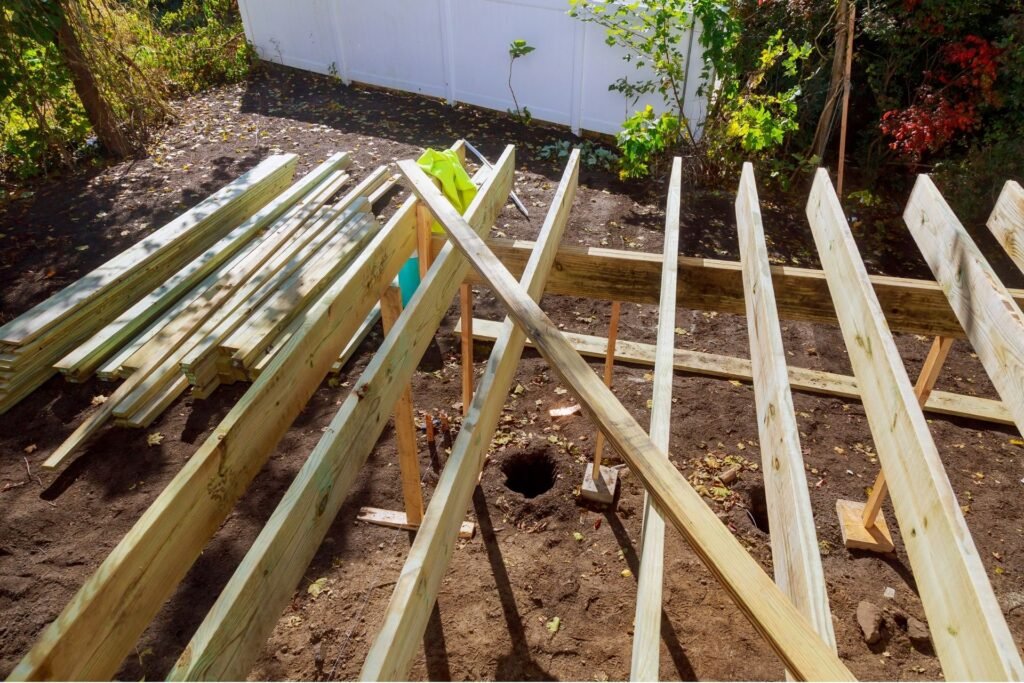
Case Studies And Examples
Case Study 1: Small Timber Deck for a Suburban Home
In this case study, we’ll explore the construction of a small timber deck for a suburban home. This example will help illustrate the typical costs and timeline involved in such a project.
Breakdown of Costs and Timeline
Planning and Design
- Cost: $500 – $1,000
- Timeline: 1 week
The initial stage involves consulting with the homeowners to understand their vision, followed by creating detailed design plans and obtaining necessary permits.
Materials
- Cost: $2,000 – $3,500
Timber is the primary material used, chosen for its natural aesthetic and durability. This includes the cost of the wood, fasteners, and sealants.
Labor
- Cost: $2,500 – $4,000
- Timeline: 1 – 2 weeks
Skilled labor is required for precise measurements, cutting, and assembly. The timeline varies based on weather conditions and the complexity of the design.
Additional Features
- Cost: $500 – $1,000
Optional features like built-in seating, lighting, or railings can add to the cost but enhance the deck’s functionality and appearance.
- Total Cost: $5,500 – $9,500
- Total Timeline: 2 – 3 weeks
Case Study 2: Large Composite Deck with Built-In Features
This case study focuses on a large composite deck, which includes built-in features such as seating, planters, and lighting. Composite decking is known for its low maintenance and long-lasting properties, making it a popular choice for many homeowners.
Breakdown of Costs and Timeline
Planning and Design
- Cost: $1,000 – $2,000
- Timeline: 2 weeks
Detailed planning is crucial for large projects, involving consultations, design iterations, and securing permits.
Materials
- Cost: $8,000 – $12,000
Composite materials tend to be more expensive than timber but offer benefits like resistance to rot, warping, and pests.
Labor
- Cost: $6,000 – $10,000
- Timeline: 3 – 4 weeks
The installation process is more involved, requiring skilled labor to handle the composite materials and integrate built-in features seamlessly.
Built-In Features
- Cost: $2,000 – $5,000
This includes custom seating, planters, integrated lighting, and possibly even a fire pit or outdoor kitchen setup.
- Total Cost: $17,000 – $29,000
- Total Timeline: 5 – 6 weeks
Case Study 3: Mid-Sized Deck with a Mix of Timber and Composite Materials
This case study examines a mid-sized deck project that combines both timber and composite materials. This hybrid approach leverages the strengths of each material to create a functional and aesthetically pleasing outdoor space.
Breakdown of Costs and Timeline
Planning and Design
- Cost: $750 – $1,500
- Timeline: 1 – 2 weeks
The design phase includes selecting the right mix of materials and creating a plan that maximizes the benefits of both timber and composite.
Materials
- Cost: $4,000 – $6,000
Timber is used for structural elements and visual appeal, while composite materials are utilized for decking surfaces and high-traffic areas.
Labor
- Cost: $3,500 – $5,500
- Timeline: 2 – 3 weeks
Skilled labor is essential to effectively combine the different materials, ensuring durability and a cohesive look.
Additional Features
- Cost: $1,000 – $2,500
Features such as railings, steps, and lighting are included to enhance safety and usability.
- Total Cost: $9,250 – $15,500
- Total Timeline: 3 – 4 weeks
By examining these case studies, you can gain a clearer understanding of the various factors that influence the cost and timeline of decking projects. Whether opting for a small timber deck, a large composite deck with custom features, or a hybrid mid-sized deck, careful planning and budgeting are essential to achieve the desired outcome.

FAQs: About How Much Does A Deck Cost NZ
How much does it cost to build a deck in New Zealand?
The cost of building a deck in New Zealand typically ranges from $300 to $1,000 per square meter. Factors such as material choice, deck size, design complexity, and labor influence the overall price.
What are the most affordable decking materials available in NZ?
Pine and other treated timbers are among the most affordable decking materials in New Zealand, with costs starting around $300 per square meter. Composite materials are more expensive but offer durability and low maintenance.
How does the size of the deck affect the total cost?
The size of the deck significantly impacts the total cost. Larger decks require more materials and labor, increasing the overall expense. However, economies of scale may slightly reduce the cost per square meter for larger projects.
What additional costs should I consider when planning a deck?
In addition to materials and labor, consider costs for site preparation, permits, fasteners, staining or sealing (for timber decks), and additional features like lighting, pergolas, or built-in seating.
Is it cheaper to build a deck myself or hire a professional?
DIY decking projects can save on labor costs but require significant time, skills, and tools. Hiring a professional ensures quality and compliance with local regulations but adds to the overall cost. Weighing these factors will help determine the best approach for your project.
What are the long-term maintenance costs for a deck?
Long-term maintenance costs vary by material. Timber decks may require regular staining or sealing, while composite decks generally have lower maintenance needs. Budgeting for these future costs is essential for the longevity of your deck.
Do I need a permit to build a deck in NZ?
Yes, building a deck in New Zealand usually requires a permit, especially for decks over a certain height or close to property boundaries. Permit costs and requirements vary by location, so check with your local council for specific regulations.
How can I save money on decking materials?
Save money on decking materials by purchasing in bulk, choosing more affordable material options, and taking advantage of sales or discounts. Comparing prices from different suppliers can also help find the best deals.
What is the lifespan of a typical deck?
The lifespan of a deck depends on the materials used and maintenance practices. Timber decks can last 15-25 years with proper care, while composite decks often last 25-30 years or more due to their durability and resistance to weathering.
Can adding a deck increase my property value?
Yes, a well-designed and maintained deck can enhance your outdoor living space and increase your property’s value. Potential buyers often view a deck as a desirable feature, making it a worthwhile investment for many homeowners.
Conclusion
In conclusion, this article has explored the various types of decking available in New Zealand, highlighting their unique benefits, costs, and maintenance requirements. By understanding these key points, you can make an informed decision that best suits your outdoor space and budget. Now that you have these valuable insights, it’s time to start planning your decking project with confidence. Don’t hesitate to take the first step toward enhancing your outdoor living area. We invite you to share your experiences and any questions in the comments below, or contact us for a personalized consultation to help bring your vision to life.
About the Author:
Mike Veail is a recognized digital marketing expert with over 6 years of experience in helping tradespeople and small businesses thrive online. A former quantity surveyor, Mike combines deep industry knowledge with hands-on expertise in SEO and Google Ads. His marketing strategies are tailored to the specific needs of the trades sector, helping businesses increase visibility and generate more leads through proven, ethical methods.
Mike has successfully partnered with numerous companies, establishing a track record of delivering measurable results. His work has been featured across various platforms that showcase his expertise in lead generation and online marketing for the trades sector.
Learn more about Mike's experience and services at https://theleadguy.online or follow him on social media:


